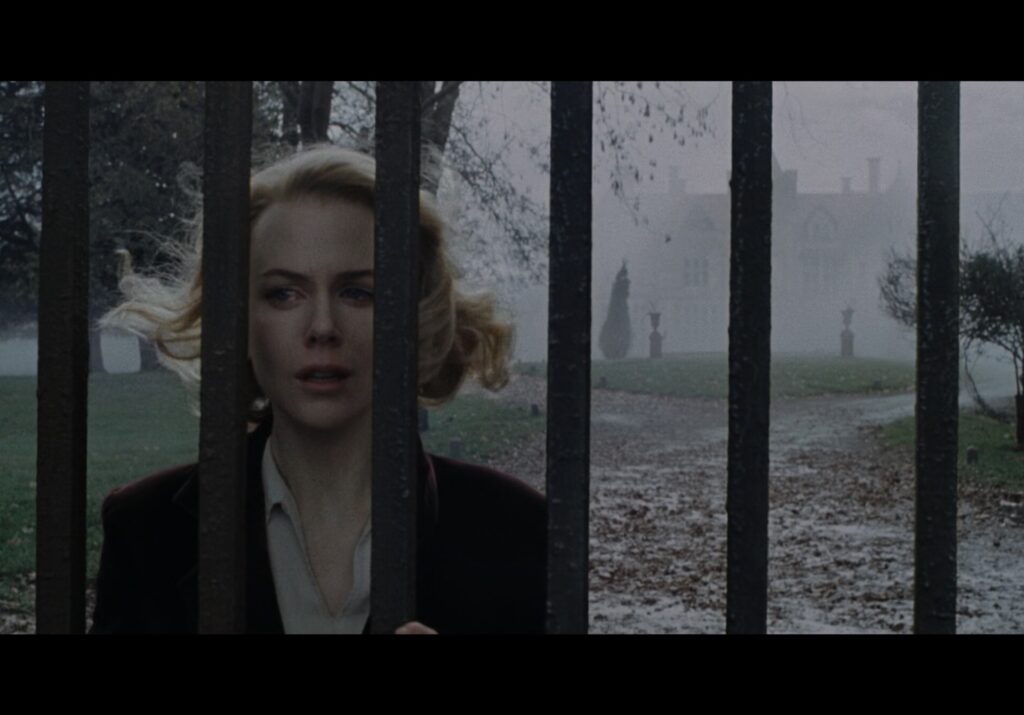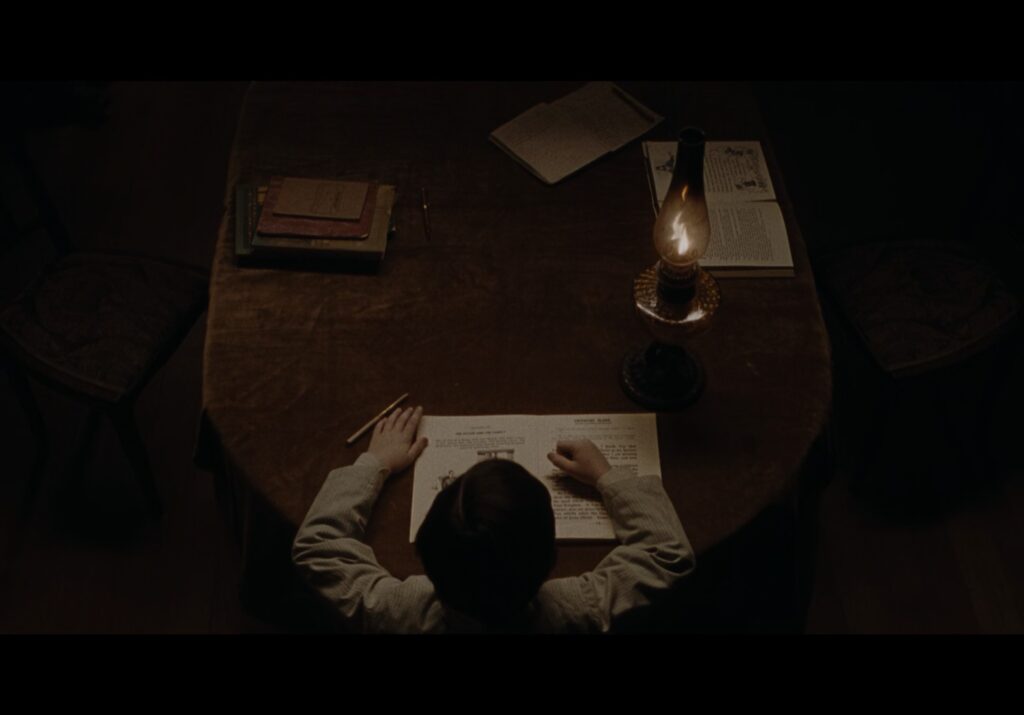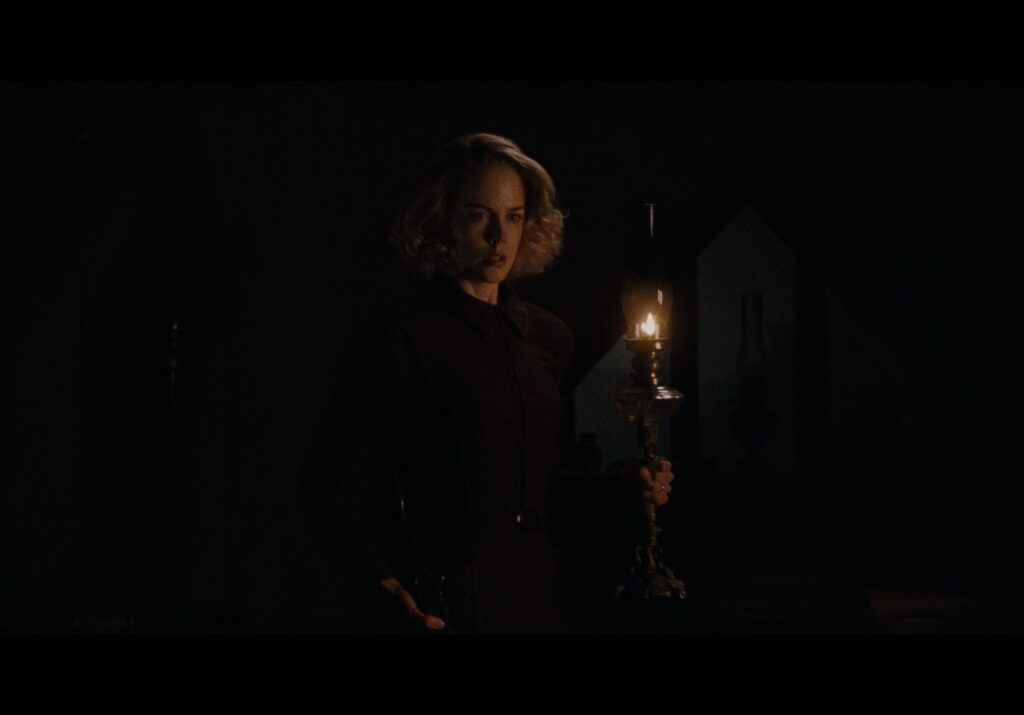|Malcolm Cooke|

The Others plays at the Trylon Cinema from Friday, January 10th through Sunday, January 12th. Visit trylon.org for tickets and more information.
Director Alejandro Amenábar wrote the music for his third film, The Others (2001), just like he had for all of his previous projects. He was admittedly still an amateur, but he had a passion for soundtracks and classical Hollywood films, especially Hitchcock, so he crafted the soundscapes as he envisioned them, fully realizing the feeling of each scene. Just like the film itself, the score had the air of a genre thriller, with subtlety and depth to its emotions and performance, all driven by Amenábar’s overriding vision. But while his previous films were very well received, they were both small in scope for their release. The Others was a different kind of project. It was his first film in English and with an international star at the helm. It was Amenábar’s debut in mainstream cinema for a global audience.
The Others is a geographically complicated film. Originally written in Spanish, Amenábar drew from his birth country of Chile for the setting. Having grown up in Spain, Amenábar was surprised by the presence of settlements for white Europeans in the south of Chile when visiting the country. These grandiose colonial estates called Fundos became the initial setting for the film’s gothic ghost story, an element emphasized by the project’s original name “The House.”

But the Latin American origins of the film were soon subject to transformation. While writing, Amenábar was also developing connections with the American film industry. Tom Cruise had seen Amenábar‘s second film Open Your Eyes (1997) which he wanted to remake in English, a film that eventually became Vanilla Sky (2001). That relationship eventually led to Cruise’s eyes landing on Amenábar‘s new script and thus the interest of his then-wife Nicole Kidman. Cruise and his producing partner Paula Wagner became executive producers and Amenábar was convinced that an English-speaking setting would be more natural for the Gothic setting of the film. Amenábar‘s producer Fernando Boviara felt he was ready for a big, international English language film, and with the combination of Cruise producing, finding a big American partner connected to Miramax to allow for funding and American distribution, and a big-name star in the lead, The Others was poised to be Amenábar’s springboard into the mainstream.
Despite The Others being a step towards Hollywood for Amenábar, he managed to hold on to his auteurist roots. His dual status as director and composer was one expression of his widespread creative control. Creating a mournful score to encapsulate the longing of Kidman’s character, he also injected a love of thrillers, Hitchcock, and classic Hollywood: inspirations which can also be found in every other aspect of the film. He also drew from elements of his life for the plot and themes, such as his upbringing in Catholic schools and a long struggle with faith, as he journeyed from religious to agnostic (and eventually atheist). Amenábar fought against the pressures of a larger production to maintain his singular and personal vision of the film.
Part of doing so was insisting on shooting in Spain with a Spanish crew. Despite tailoring the film to reach American and international markets, the film was funded in part by the French production company StudioCanal and was intended to remain a firmly European production. In addition to working with a local crew, Amenábar hired English actors like Christopher Eccleston and the legendary Eric Sykes. Shooting in Spain was also influenced by the fact that Amenábar’s English was not very strong at the time, necessitating the help of a translator to adapt the script. He received a crash course in English upon moving to London, where he was casting for the lead child actors in the film while simultaneously developing the ability to communicate with them. Working with Kidman to develop her character on the set was also difficult, often requiring a translator. However, over the course of production, Amenábar’s overriding vision and developing relationship with Kidman managed to overcome linguistic boundaries, forming what Kidman described as a “telepathic” communication about the character and her motivations.

The Europeanness of the production was also baked into the story. Due to the strong Catholic themes, Amenábar was torn between setting the film in Ireland, or the ultimate setting of the film: Jersey Island, a small, English-speaking island off the coast of Normandy, which was subject to a large resurgence of Catholicism in the 20th Century. Jersey Island was occupied by the Nazis during WWII (which also looms large as a geographic and thematic element in the film) and the uneasy collaboration between the island’s inhabitants and the fascists presented Amenábar a setting with a fascinating historical legacy and immensely fertile ground for the film’s themes of religion, guilt, twisted morality, and the afterlife.
The film was an enthralling mix of cultural sources, producing a haunting ghost story tinged with regret, guilt, and longing. Keeping true to Hitchcock and Amenábar’s other classical Hollywood inspirations, it was a genre film, but also managed to achieve emotional and thematic depth. Although the film was hit with a foreboding curveball with the release of The Sixth Sense during production, a thriller with an almost identical twist ending, Amenábar and his collaborators pushed on, trusting that his commitment to a strong artistic vision would lead to a strong film that could still survive the box office.
And they were right to do so: the film was a massive financial success. The decision to make the film appeal to an international audience paid off, making $200 million back on a $20 million budget, and creating a film that served as proof of a different truth depending on who you asked. To Amenábar’s supporters and producers, it showed that his talent was no fluke and he had the capacity to make an international film that was successful creatively, critically, and financially. To European critics at the Venice Film Festival, it showed the world that European productions could be just as successful globally as American ones. Reflecting on it years later, it showed Kidman that a strong female lead performance of a deep and compelling character could carry a film without the need for a male lead.

Making The Others was an emotional experience for Kidman. After her initial interest, when trying to dive deep into the character of Grace, she was terrified by the intensity of the role. The prospect of having to hurt children on screen and create a character who imposed a harsh and strict system of belief on her children was a tall order, leading Kidman to almost quit the production. But being convinced to stay on, she turned her focus to developing that telepathic relationship with Amenábar and developing a character who was dark and complicated, but fueled by a strong pathos. A person who does terrible things, but is always motivated by an understandable and tragic psychology, designed to engender empathy in the audience rather than disdain.
The type of collaboration involved in developing Kidman’s character is a part of filmmaking often overshadowed when talking about the vision of an auteur. Perhaps instead of thinking of Amenábar as the overriding creative force behind the film, it might be better to remember one of his other roles: that of the composer. Amenábar wrote the underlying music that would be performed and realized by others. The film wouldn’t work without elements like Javier Aguierresarobe’s photography or Benjamín Fernández’s sets in Amenábar’s own words: “What I didn’t want to do was mess it up with a score that wasn’t worthy.” As he says, he may not be a professionally trained musician, but, “I do know very well (…) what the scenes need in my films.” Strings are taut with tension in scenes of horror and they flow out with a nostalgic classical Hollywood flair when expressing the omnipresent longing of Kidman’s character. He had never done it on such a scale, but when asked to, Amenábar wrote a worthy score, in more ways than one.
References:
“Looking Back At The Others” Bonus Materials. The Others Blu-ray, StudioCanal, 2023.
“The Music of The Others” Bonus Materials. The Others Blu-ray, StudioCanal, 2023.
Edited by Finn Odum
